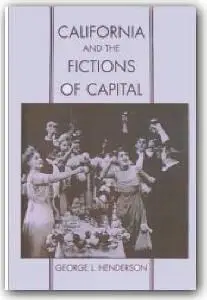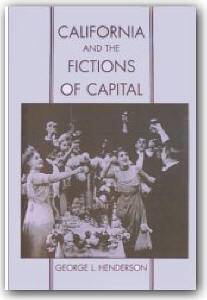George L. Henderson, «California and the Fictions of Capital»
Oxford University Press | ISBN 0195108906 | 1998 Year | PDF | 2,75 Mb | 304 Pages
Oxford University Press | ISBN 0195108906 | 1998 Year | PDF | 2,75 Mb | 304 Pages
Between the frequently recounted events of the Gold Rush and the Great Depression stretches a period of California history that is equally crucial but less often acknowledged. In his fresh, synthetic consideration of these in-between years, George L. Henderson points specifically to the
take-off of California's rural juggernaut between the 1880s and middle 1920s–the upward spiral of city bids for country dollars and rural bids for urban investments. These decades were salve for mining's risky finances yet groundwork for the chaotic 1930s. Moreover, Henderson argues that much like the two important periods which framed it, this era produced a cultural and literary apparatus that attempted to grapple with capital's machinations, if only to legitimate them in the end.
Central to California and the Fictions of Capital is a theory of how the circulation of capital wove itself into agriculture. The book asks why it mattered to capital that agriculture was based in Nature, and then explores the procedures through which images of Nature became central to capitalism's story of itself. What unique possibilities did Nature offer to circuits of capital and what was their role in suturing the urban and rural together? How did boom and bust intervene and set the pace for regional change? How was capital linked to the racializing of working bodies? And why was the capitalist imperative expressed in landscape alterations like irrigation? Such are the key questions informing this bold, far-reaching volume.
Beyond political economy, the book also looks to the rural juggernaut's cultural and literary work, which was stamped by celebratory, if fretful, ruminations. In all sorts of texts–but especially in novels by Frank Norris, Mary Austin, Harold Bell Wright, and many other writers–difficult questions surfaced. Capital was seen in terms of its spillage into rural frontiers, just as rural frontiers were seen in terms of movements of capital. Capital was the new geography of money. But for whom did it work? Which identities did it favor? In mapping the real and imaginary realms that capital occupied, Henderson locates the banker-, land developer-, and engineer-heroes of California fiction as well as the fictionalized "new woman" of the capitalist, agrarian West. He unravels the colliding representations of race, gender, and class, while linking their treatment to the naturalizing rhetoric of capital's agrarian turn.
In part a tour of California as a virtual laboratory for refining the circulation of capital, and in part an investigation of how the state's literati, with rare exception, reconceived economy in the name of class, gender, and racial privilege, this study will appeal to all students and scholars of California's–and the American West's–economic, environmental, and cultural past.



